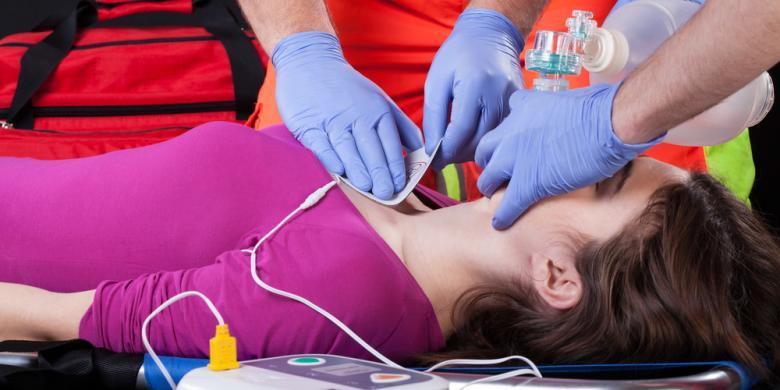Contents:
- Medical Video: 5 People That Died During A Workout
- Why can cardiac arrest occur while exercising?
- Who is at risk of experiencing cardiac arrest while exercising?
- Observe these heart health signs when you exercise
Medical Video: 5 People That Died During A Workout
Sports or physical activity is an activity that helps maintain healthy blood flow because it causes the heart to pump blood faster. A moving body also makes the metabolic process improve, so it can reduce fat buildup under the skin and in the heart arteries. However, although it is rare, there are some cases of people who die while exercising, due to a disruption in heart function ...
The heart is one of the most important organs that sustain life. Death occurs when the heart is unable to pump blood throughout the body optimally, resulting in malfunction and stopping the heart from beating. This can occur when exercising.
Why can cardiac arrest occur while exercising?
The phenomenon of cardiac arrest or commonly known as cardiac arrest, is a condition in which the heart suddenly stops pumping blood. This is also a symptom of other cardiovascular diseases that might appear when someone is exercising. Although rare, cardiac arrest is the cause of sudden death while exercising.
Cardiac arrest occurs when the heart muscle that stops working suddenly, this is different from a heart attack caused by blockage of blood flow. Even so, a heart attack can also trigger a cardiac arrest.
The process of cardiac arrest has a complex mechanism. The workings of the heart muscle's electrical force are influenced by the body's water content and mineral balance. The occurrence of cardiac arrest in a person while exercising is often preceded by conditions of dehydration, imbalance of potassium and magnesium, and other levels of minerals in the blood.
Who is at risk of experiencing cardiac arrest while exercising?
Cardiac arrest while exercising can be experienced by anyone, however, adults and elderly men are more at risk. This is related to the presence of untreated cardiovascular disease. Other factors that increase your risk of experiencing cardiac arrest while exercising include:
- Lack of physical activity
- History of diseases such as hypertension, coronary heart disease, and diabetes
- Smoking habit
- Obesity
- Uncontrolled cholesterol levels
- History of congenital heart abnormalities
In general, the frequency of one's exercise tends to decrease with age, even though physical activity is still needed. This is because as age progresses, the risk factors for cardiovascular disease begin to increase and the heart requires more efficient work.
The American Heart Association (AHA) says that physical activity is needed to regulate cholesterol pressure and levels, and inhibit the development of cardiovascular disease. Routine activities can reduce the risk of sudden death during exercise, both due to attacks and cardiac arrest, because the body is used to adapt to increased body activity. Control of these risk factors is needed to reduce risk factors for cardiac arrest while exercising.
Observe these heart health signs when you exercise
If you already have risk factors for heart disease and have not been active in physical activity before, pay attention to some of the following danger signs that might occur before or for a moment of exercise:
Pain in the chest - is a complaint that often occurs when a person has heart failure. Discomfort or pain can appear with a mild intensity but get stronger while exercising, and can disappear and reappear.
Breathless - Breath is too short and accompanied by difficulty taking breath is a trigger for a heart attack.
Arrhythmia - heart rhythm disturbances are characterized by a sensation of a drop in heart rate, increase or stop for a moment.
Abnormal sweat - in the form of cold sweat which can also be accompanied by nausea which is a sign of a heart attack.
Pain in other parts of the body - heart problems during exercise can also cause pain in the muscles of other body parts such as the upper arm, back, neck, lower jaw or stomach. The pain can also move from one part of the body to another.
These symptoms are a warning if the heart is experiencing interference so it is necessary to immediately stop the activity and rest. Emergency handling is also needed when a person faints or becomes weak suddenly and also when the alarm is getting worse and does not disappear after resting.












